
Lower Manhattan as seen from the Brooklyn Bridge.
I was more than ready for a change after living in San Francisco for 8.5 years. I had New York on my mind.
I don't often talk about personal matters on this blog (aside from Simplify) but figured this milestone was worth noting. It was time for me to close the chapter I started when I moved from Atlanta to San Francisco in 2010.
I first experienced Silicon Valley and the San Francisco Bay Area in 2006 when I visited California for the very first time. I was 19 and came as part of my Yahoo! internship in Sunnyvale. I met some cool folks, saw a lot of impressive startups and took in the sights. My interest in the Bay Area and its awe-inspiring tech industry had been ignited. I would visit again in 2007 and then 2008.
With the prominence of personal blogs and the rise of social media at the time, it was easy to keep up with friends and acquaintances in California... and see what I was missing out on. The draw of a vibrant tech community where people were working on their own startups or at companies they were passionate about became too much for a 23 year old me. I had to move to San Francisco.
I still remember the things about the San Francisco Bay Area that amazed me at the time:
- Everyone works in tech! Go to a random coffee shop and overhear everyone talking about their startup idea or what they have been building or investing in recently. Maybe you run into a tech celebrity like Jack Dorsey, Kevin Rose or Tim Ferriss. Or maybe you'll spot Ashton Kutcher at a local bar meeting with a startup.
- Big risk, anything can happen culture. Have an idea for a product? Just go build it! Get funding! Become a millionaire! Or work for a tech giant and enjoy the immense perks. Either way you'll be living well.
- Pay it forward culture. This felt more common several years ago, but there seemed to be a large willingness of other entrepreneurs and folks working in tech to help out others. I was always shocked at the number of people that would be willing to grab a coffee with a cold email and then end the chat asking how they could help. Everyone was accessible.
- California is stunningly beautiful. Really no getting around this—California is a remarkably beautiful place. Walking to work and seeing mountains and water in the distance was always nice. Being a short drive to a number of activities in nature was never taken for granted. It's also a driving city. This might be a negative for some, but as a car enthusiast I loved driving around on the weekends: either for errands, to explore the surrounding areas or just for fun.


Left: Golden Gate Bridge (from Lands End Trail, Eagle's Point), Right: Battery Spencer
I had a great time in San Francisco and learned so, so much—personally and professionally—in my time there. After my first startup in Atlanta, I ended up working on two more startups I co-founded while in San Francisco. I went through Y Combinator and then joined Twitter in 2013. I met so many talented people and created many lasting friendships. I don't regret my time in San Francisco one bit.
This isn't the kind of post where I say things turned sour and I really began to hate the city. I still love the Bay Area. I just felt I needed a change of scenery.
Every year began to feel the same. My friend group had stagnated (sure, a lot of that is just the norm when you get older) and the dating pool wasn't in my favor either. I needed something to change and moving was well within my control.
I wanted to experience the hustle and bustle of a big city. It had to be New York for me.

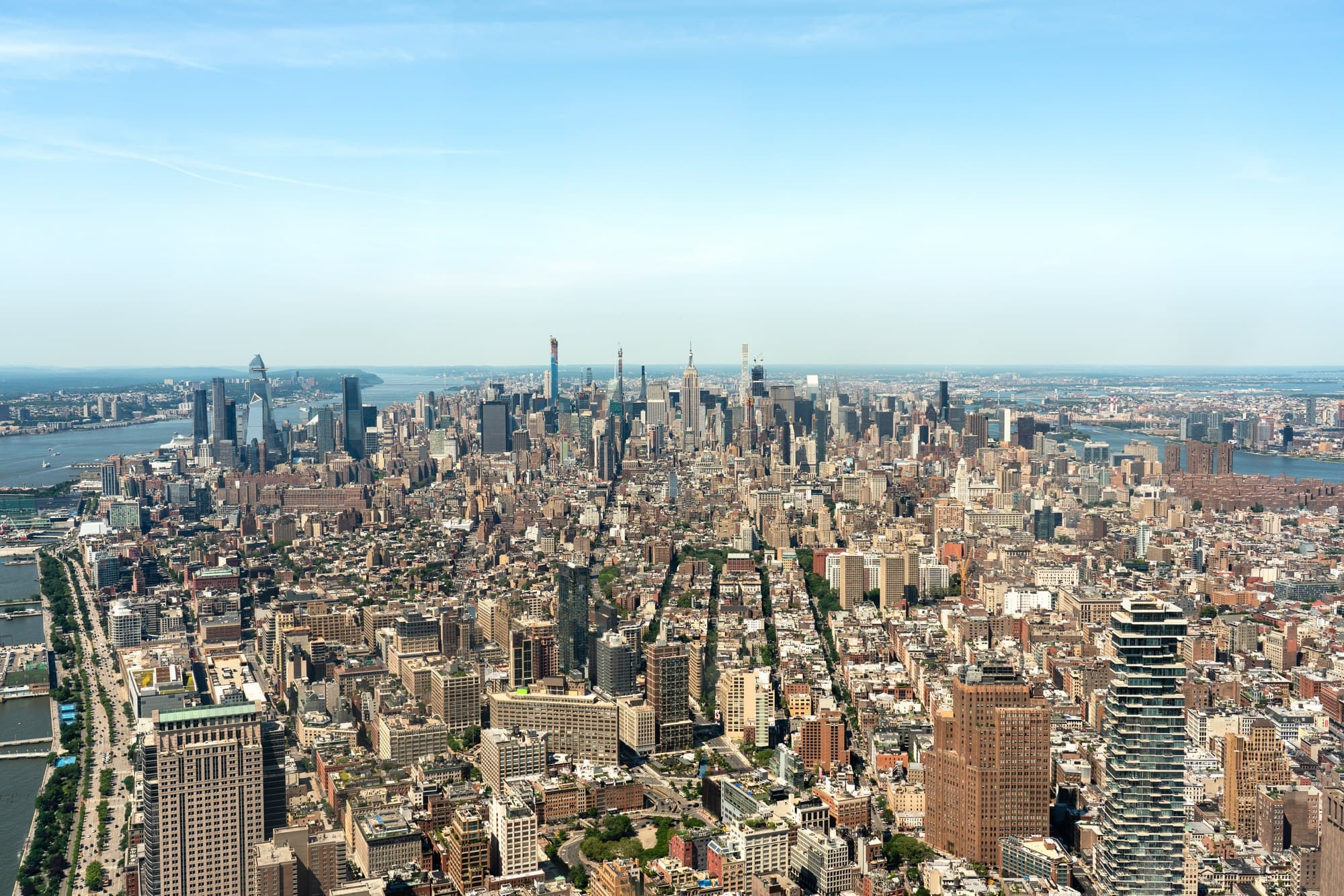

Top: Sheep Meadow at Central Park on a sunny June day, Middle: Manhattan (from One World Trade Center), Bottom: Lower East Side
But I kept dragging my feet.
I had purchased a home a few years ago, thinking I would never leave San Francisco. And I truly felt that living in San Francisco was the #1 best thing I could do for my career with the sheer number of tech companies based there.
I was long overdue to prioritize life ahead of work.


Left: Cafe Mogador in the East Village during the annual Dance Parade. Right: Bryant Park in June.
I also realized how good I had it in San Francisco: I loved my setup at home, I loved living close enough to walk to work everyday, I had a car, in-unit laundry, my gym was close to my house: everything was convenient. I was comfortable.
The trigger point
What pushed me to do it
A few things led up to me finally pulling the trigger. I had visited New York in 2017 and then in 2018, falling more in love with the city with each visit. I also have family on the East coast, both near New York and that I could easily take an Amtrak train to visit. And I had two of my oldest friends in New York.
I had also witnessed a steady trickle of coworkers, friends and acquaintances moving away from San Francisco to try something new. Some people desired big city life in New York, some desired sunnier days in Los Angeles, others wanted to be closer to nature or family.
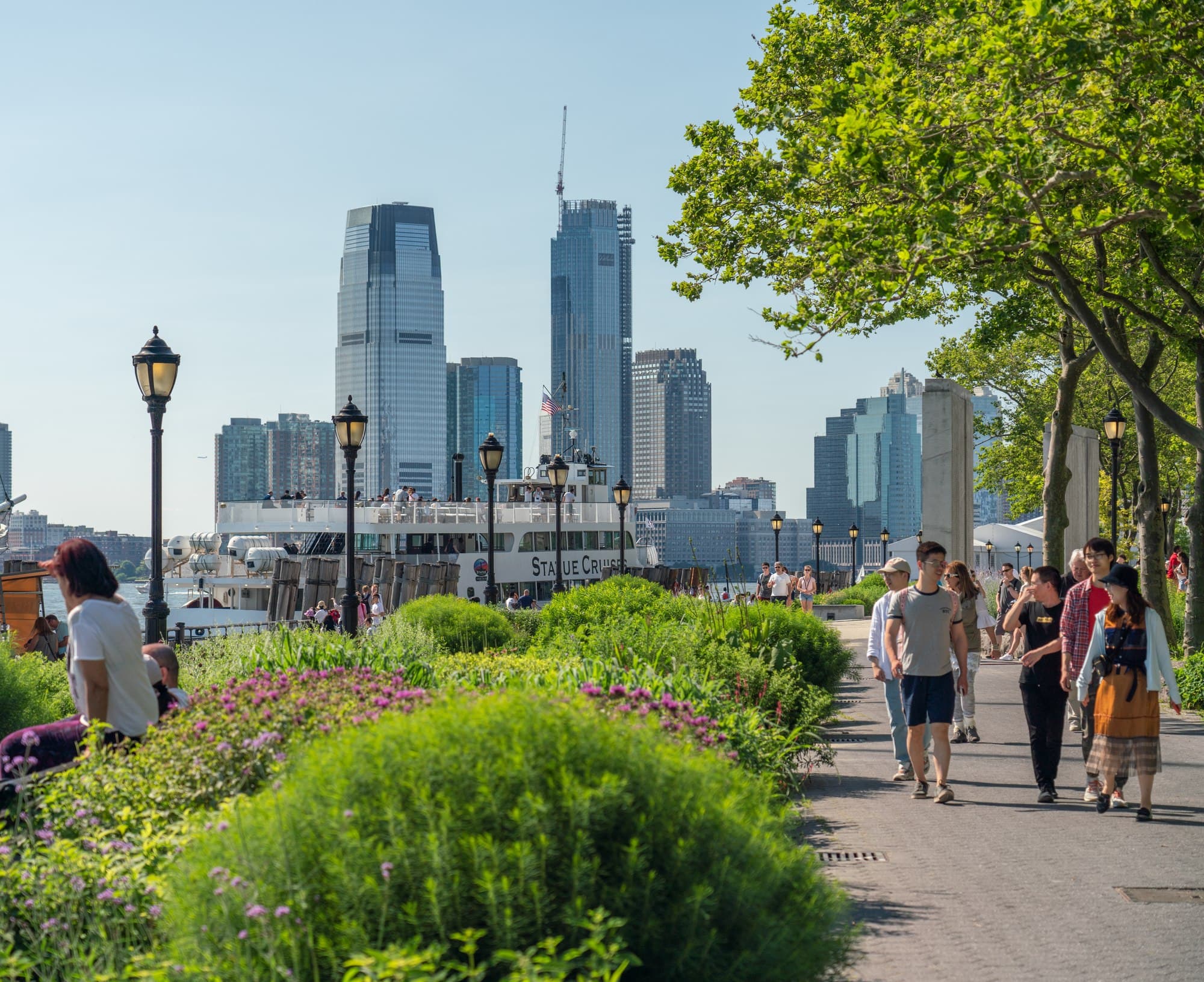


Top: Battery Park, Bottom left: Astor Place near East Village, Bottom right: Greenwich Village
Of course there was one last important piece. Could I keep my job at Twitter where I've been happily employed as a designer for over 6 years?
Twitter had made it significantly easier to transfer to a remote role or relocate to another office. With the help of my supportive manager I went through the process and eventually received approval and support from Twitter and the design team to transfer to our New York office. It was purely a personal move, so all moving costs would be on me, but I couldn't have been more excited when I got the news.
✨NEWS✨ After a lovely 6 years working at Twitter (and 8.5+ in San Francisco), I have decided to continue working at Twitter and just transfer to Twitter NYC.😁🗽 I'll be leaving in ~mid-Feb to apartment hunt. Please send me *any* NYC recommendations, must do/eat/see https://t.co/iKrBXVRxz4
— Paul Stamatiou 📷 (@Stammy) January 7, 2019
My team has become increasingly more distributed and I often collaborate with engineering, product, research and design coworkers in San Francisco, Boulder and New York, as well as several fully-remote coworkers in various places.
Now I just had to plan the move.
Moving logistics
Dealing with a complex cross-country move
My decision was made and I had my official New York office start date set for about 2 months out. It was time to make progress on my to do list:
- Rent out my condo: I had to figure out how to rent out my place in San Francisco in a timely manner. Given that I would be living out of state I wanted to go with a property management firm so I could be completely hands off. Surprisingly, this ended up being the easiest problem to solve. I found a management company through my neighbor and it took them just 3 days to find a tenant for my place.
- Fix things around the house: I had a small list of home tasks to complete before I could rent the place out: replace the garbage disposal that was on its last legs, replace a noisy toilet valve, paint over a few wall scuffs and reseal some tile in the kitchen and bathroom. I would need to do a deep clean too.
- Downsize & pack: I readily expected I would end up in a New York apartment that would be considerably smaller than my place in San Francisco so it was important to significantly offload some of my possessions before packing up.
- Find two sets of movers: As part of this downsizing, I decided to part with most of my furniture and ship it home to my parents. They still had some empty rooms after rebuilding their home following Hurricane Harvey destruction, so the furniture would be put to good use.
- Ship my car: I also decided I would ship my car home. I definitely wouldn't want to deal with a car in Manhattan, especially my first year there where I would still be getting settled. I had shipped my cars around before and went with the same company, Montway Auto Transport. It cost around $1100 (and I had done it fairly last minute) to ship my car from San Francisco to Houston.
- Apartment hunt: I casually began looking for apartments in New York just to get an idea of what the market was like and what kinds of places were available. I definitely didn't want to commit to anything until I was actually in New York to see it, but I started setting up filters and asking a few listing agents if they would have similar listings around my timeframe.


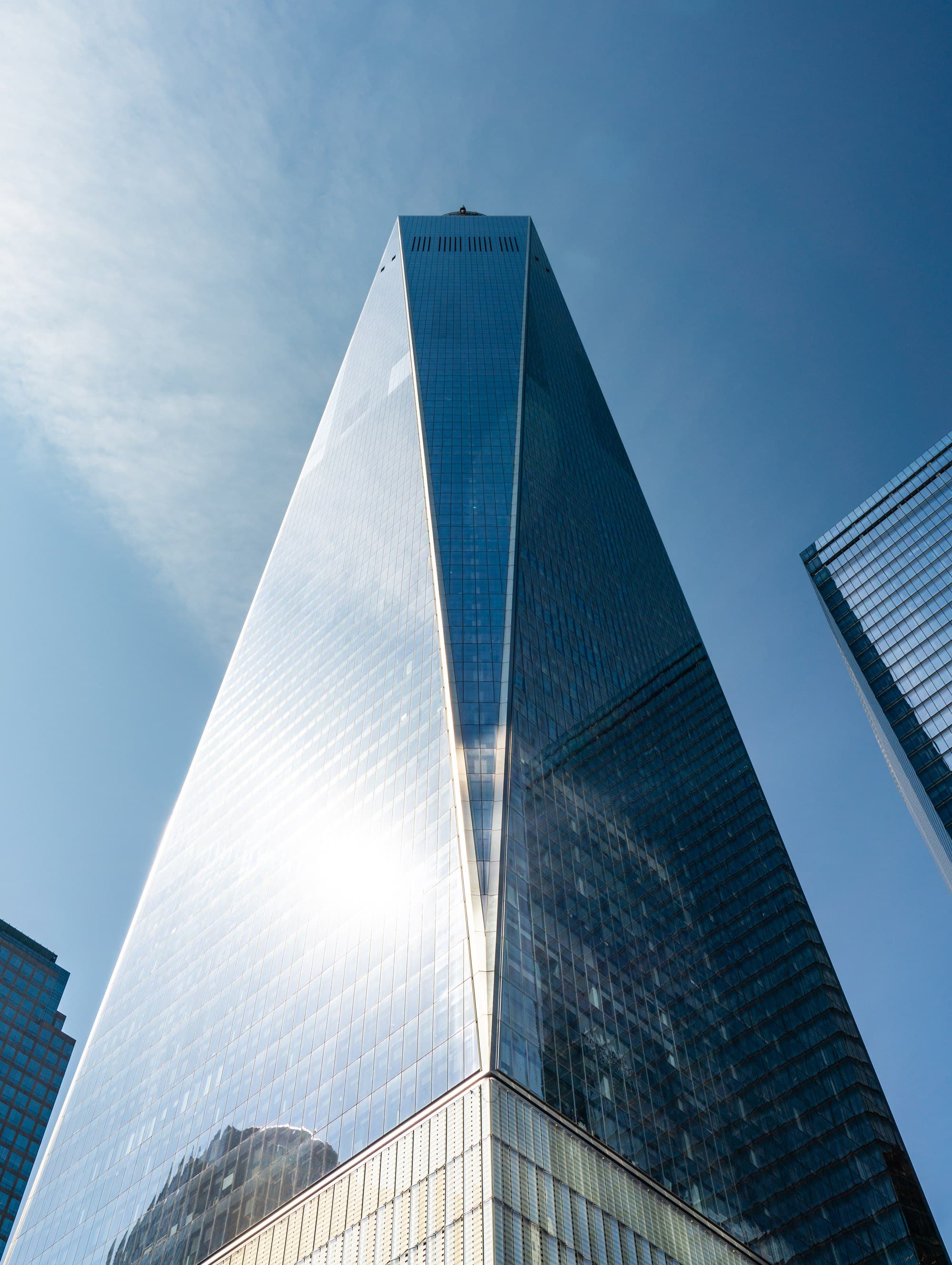
9/11 Memorial, The Oculus, One World Trade Center
Finding movers
It would be tedious enough to research and select one moving company, but I had to find two for my two moves: some stuff to my parents in Texas, the rest to New York. It was a slog.
First off, absolutely no moving company has flawless reviews. Each time I found what I thought was a great moving company, I would invariably see some horror story about how it all went wrong.
Eventually, I provided my info to a handful of moving companies, played a lot of phone tag to get quotes and constantly had to remind them to get back to me, even after saying I was on a tight timeline. Some had outrageous prices ($7,000 to move the minimum amount to Texas) and others were worryingly too cheap at under $1,000.
Picking my San Francisco to New York City movers was easier than finding the Texas movers. A friend had used a company called MoveEast.com (known as CA NY Express) that specializes in this exact cross-country move. I went with them and they responded to all of my emails quickly. I had them move my items to a storage facility in New Jersey instead of the default one in California. That way they could deliver my items to me in New York within a few days after I found an apartment, instead of having to wait weeks for the items to only then begin the journey. The total for this move (excluding third-party insurance mentioned later) was $1,500 for 1,500 lbs.
For the Houston move, which included all of my furniture and at least a dozen boxes, I ended up going with a Bay Area moving company called NorthStar Moving. The total this larger move was about $1,650 excluding insurance.

East River Park and the Williamsburg Bridge
Get your own parking permits
The one unexpected part about this process was that I was responsible for reserving the parking spots from the San Francisco MTA myself. Unfortunately, since I lived on a busy street and didn't book these more than a few weeks in advance, the reserved spots for the two separate moves ended up costing $574. Fortunately, they had an easy-to-use website and the approval process only took about two days.
A note about moving insurance
I also had to get moving insurance. Moving companies include the bare minimum insurance called released value protection—it's a joke. It only covers 60 cents per pound for interstate moves for any items that are lost or damaged.
Some moving companies may sell you insurance through a third-party they work with but you may have to do your own research and book it separately on your own. There are a few third-party moving insurance companies to choose from. I went with one called MovingInsurance.com for "Full Replacement Value" insurance.1
I ended up paying just over $500 to insure the California to New York move (about $20k covered with a $250 deductible). For the Texas move I paid closer to $850 for moving insurance as I had some pricey furniture in that move that I needed to insure well.
Upon reading the fine print of the insurance policy I learned that owner-packaged boxes were only covered for a maximum of $250. This worried me a bunch. I took extreme care packing my items thoughtfully and with an absurd amount of packing material for safety. I would not trust a moving company to quickly pack for me and have to pay a huge premium for that service. In the end I decided to send several of my more precious boxes (computer parts and excess camera gear that I couldn't fly with) via UPS insured.

Brooklyn Bridge as seen from One World Trade Center
Downsizing & packing
I have enjoyed keeping a fairly minimal footprint in recent years—be it from traveling light, keeping an organized filesystem and notes, or simply owning less. However, I was only able to keep my possessions to a small, manageable amount as a byproduct of moving frequently when I lived with roommates.2 I unfortunately accumulated much more stuff after I had my own place for several years. I was in need of decluttering and this was the perfect opportunity.
I cut my possessions in half and it felt great.
I decided not to bring any of my furniture except for my favorite floor lamp and a small chair. I had certain furniture that only worked with particular floor plans (like a very long bookcase) that would be tricky to use in a smaller apartment. It would be best to part with them.
I feel like this topic is covered ad nauseam so I won't go into much detail. Mainly, I sold quite a few gadgets (like my Microsoft Surface Go and Oculus Rift) on Facebook Marketplace and Twitter, as well as directly to friends and Twitter coworkers.
Then came the decision of what to do with my large desktop computer that I rely on for my photography work, as well as my bulky 4-bay network attached storage device. I decided to replace both of them with smaller variants. The NAS was the easiest one to deal with; I migrated to a smaller 2-bay NAS with larger 12TB drives.
After failing to sell my custom desktop PC, I decided to ship it home to use when I visit. Then I built a new, much smaller mini-ITX PC based on an 8-core 9900K and Nvidia RTX 2080 Ti graphics card. You can read more about the new build in this update, as well as in my stuff I use page.
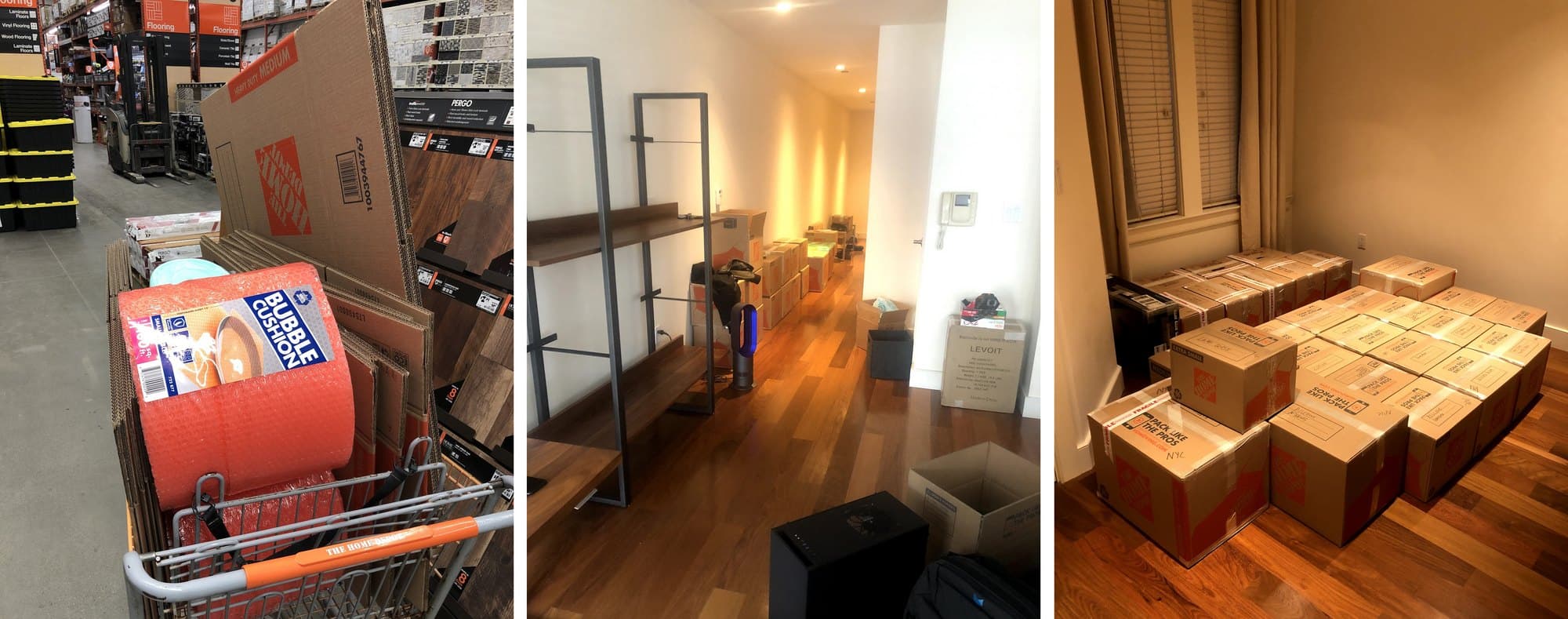
Lots of Home Depot runs for packing materials.
Packing came next. This involved countless drives to Home Depot to purchase boxes and packing materials as I constantly underestimated how much stuff I had to pack. In the end, I had about 25 small and medium sized boxes to move, including several of my Level Frames framed photos.
Apartment hunting
The moving days came and went. Soon enough I was waking up on my red-eye flight to New York, ready to land.
By this point I didn't have too much planned: I had booked a hotel for a week and had two apartment open houses I wanted to check out. My hotel was near the East Village in Manhattan, where I had figured I may want to live but I would figure things out as I went.
It's probably a good time to mention that I moved in the middle of February. It was freezing and it would snow numerous times in my first few days. My friends thought I was crazy for moving in February but I did not want to spend any more time in San Francisco at all. I wanted to be in New York and it was the only thing on my mind. While there is seasonally less available apartment inventory in the winter, the off-season rent prices were supposedly up to 5% cheaper compared to summer.

Apartments above a restaurant in Greenwich Village
I had actively browsed around on StreetEasy and Zumper when I was still in San Francisco, but most places were either available immediately or within the next two weeks so there wasn't much I could do if I found a place I liked without being there. I contacted listing agents for places I was interested in and told them to keep me in the loop for similar units.
Handy resources: In addition to the aforementioned apartment listing sites, I found BitterRenter.nyc, r/NYC and r/AskNYC to be helpful.
There's a ton of well-documented and maintained info online about searching for an apartment in New York, so I won't dive into too many details. Here's a few points from my experience:
-
The prices: Coming from San Francisco, the average Manhattan rent seemed cheaper at first glance. Then I quickly realized that the definition of a Manhattan bedroom differs quite a bit from a San Francisco bedroom.
You're more likely to find really odd floor plans that make it difficult to place furniture anywhere convenient, poor lighting due to tiny windows that face another apartment 5 feet away, steep walkups, bed bug history in the building and so on.
As such, if you want what I would consider a San Francisco quality one bedroom apartment, I think you'll be paying considerably more in Manhattan.
-
The 40X rule: Most landlords and property management companies expect you to earn 40 times the monthly rent of the apartment in annual income. So if your rent is $4,000 per month, you need to earn at least $160,000.
If you can't meet that, you can add a guarantor to the lease but they will need to earn 80x. I'm not sure how strict various landlords are on this, but offering to pay an extra security deposit seems to be a common alternative.

Manhattan skyline as seen from the Lower East Side. Hudson Yards to the left, Empire State building in the middle.
-
Watch out for "net effective" listed prices. Some apartments will offer one month of free rent (or more for longer leases) to make the listing enticing. Sounds great! Unfortunately, they factor that into the rent and give you the net effective rent, not the actual per month gross rent when not accounting for that free month. It just means that come next year then the lease renews, you better be okay with the actual rent price being much higher.
Apartment listing websites like StreetEasy are good about noting if an apartment listing may use promotional pricing like this, but it's important to double-check.
-
Broker's fees: I had been cautioned that the vast majority of apartments in New York required using a broker agent to get. That fee would typically end up being 12-15% of the annual rent of the apartment! However, in my experience, and maybe this was only because I was moving in the winter or was looking at generally more expensive apartments in newer buildings, I felt that there were a decent amount of no-fee apartments available.
My general feeling is that if you find a place that has a broker's fee, you really should like the area and apartment enough that you feel like you'll be there for at least a few years to justify the fee. It would be very pricey to bounce after just a year.

Lower East Side
-
In-unit laundry: This was somewhat rare to see in San Francisco apartments, but it seemed absolutely rare for New York apartments. It doesn't seem to be a big deal with laundromats and laundry services on every corner (or various full-service laundry apps if you really can't be bothered), not to mention ones that deliver. Even if you find a place with in-unit laundry, it probably has a "high efficiency" ventless dryer unit that takes 2-3x longer to dry your clothes than a vented unit.
-
Cooking hoods: As someone who cooks often, including making lots of smoke searing meats (love my Searzall torch for sous vide steaks), just about every Manhattan apartment kitchen will be a let down. It's near impossible to find any apartment that has an actual vented range hood (not one that circulates "filtered" exhaust inside your apartment).
Get used to disabling your smoke detector, opening all windows and turning on your air purifier to max whenever you plan to cook anything that might make a bit of smoke.
-
They won't tell you the size. Probably not a huge shocker but I did find it a bit counter to my apartment hunting experience in other cities: it's extremely rare for a New York apartment listing to mention the square footage. Even when I pointedly asked for a few apartments, they wouldn't provide it. I just figured it was only that they want to get you to see the place so they can convince you in person that it's a great spot but it seems there's also some history here.
Manhattan or Brooklyn?
Why I knew I wanted to be in Manhattan
I knew I wanted to be in Manhattan. Not Brooklyn, Astoria, Long Island City or Hoboken. My friends are in Manhattan and work is in Manhattan. But most importantly: I just wanted as much of an extreme contrast as I could get from San Francisco. I wanted to live in a dense, busy and lively area that was easily accessible to other captivating parts of New York as well.
The city seen from the Queensboro Bridge is always the city seen for the first time, in its first wild promise of all the mystery and the beauty in the world.
—F. Scott Fitzgerald, The Great Gatsby
While Queens is the largest borough by land size, Brooklyn is the most populous with 2.65M residents—a million more than Manhattan. However, that population is quite a bit spread out. As such, it's not nearly as easy to get around Brooklyn with public transit as it is in Manhattan. The other downside about Brooklyn for me personally is that it's not as 24/7 as Manhattan. You're much less likely to find late-night food or a bodega open late to grab a few essentials. It sounds silly but I absolutely hated how everything in San Francisco closed so early and I wanted the opposite.
I was yearning for the hectic Manhattan city life; my choice had been made.


Top: Manhattan Bridge and Brooklyn Bridge spanning the East River to Brooklyn. Bottom: Manhattan and the Empire State building. Both shot from One World Trade Center with my 100-400mm GM
There would be tradeoffs associated with this decision to live in Manhattan of course: a smaller and more expensive apartment compared to any of the other boroughs. Living in Brooklyn is more likely to give you more of a residential feel with tons of row house brownstones lining quaint streets that aren't in the shadows of surrounding tall buildings.
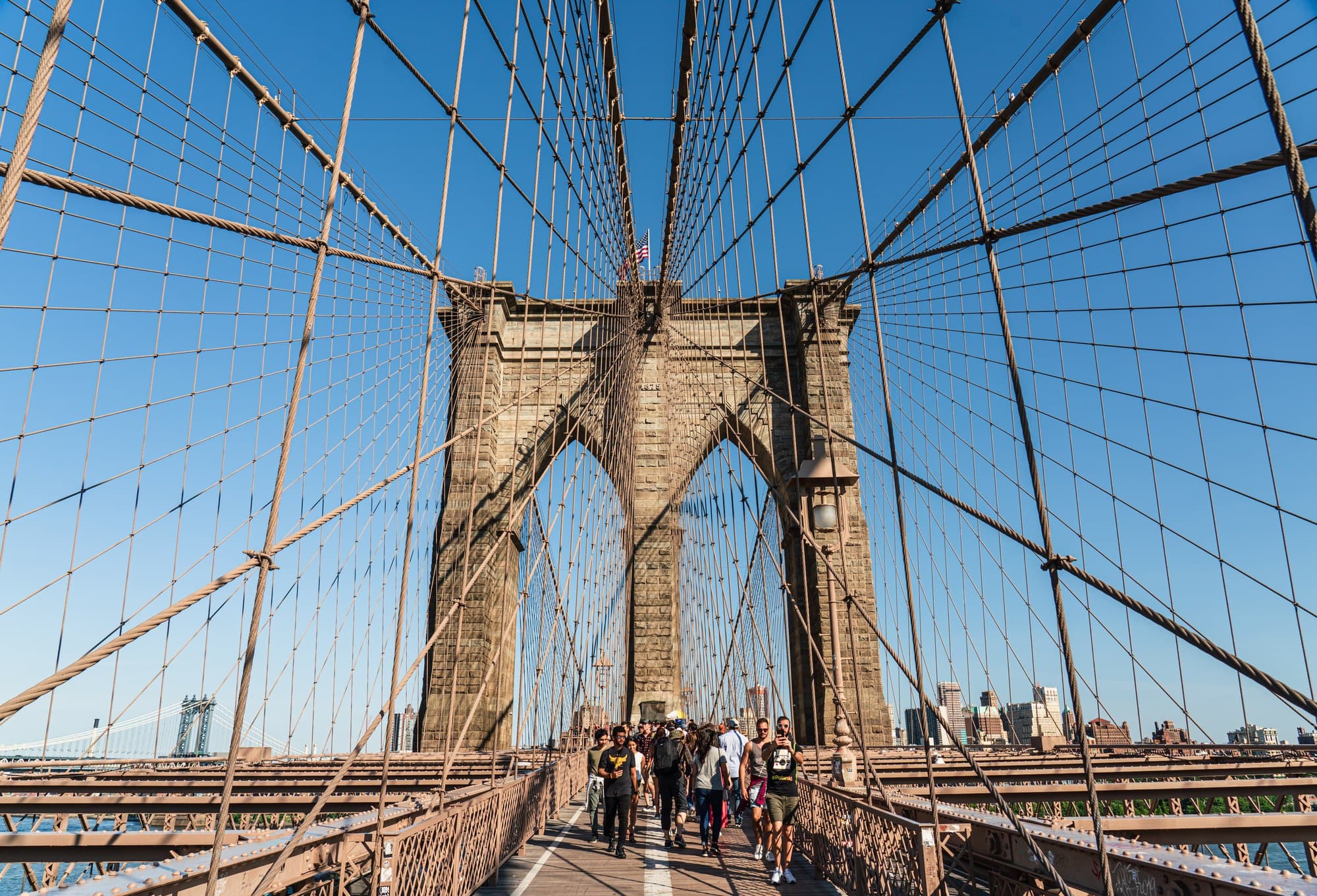
Walking across the Brooklyn Bridge to DUMBO. My 2nd walk across. Last did it on a visit in 2015.
Obviously, living in Manhattan doesn't mean you can't easily visit Brooklyn whenever you want. Numerous trains run to Brooklyn and it's likely to be less than a 20 minute ride if you're closer to the East Side in Manhattan. There are a ton of fun neighborhoods and parks in Brooklyn worth checking out: Williamsburg, Park Slope, Brooklyn Heights, Greenpoint and Prospect Park. And of course DUMBO is fun to visit, despite being touristy:





Top: Obligatory photo of the Manhattan Bridge from Washington Street in Brooklyn. Middle: Brooklyn Bridge and Manhattan Skyline from Main St Park in DUMBO. Bottom: Main St Park and Manhattan Bridge
What neighborhood?
I ended up in the East Village
I wasn't terribly picky about where I would begin my neighborhood search in Manhattan and knew this would likely be dictated by what kinds of apartments I found. But I knew I would prefer something relatively close to the Twitter office in Chelsea so I could walk to work on nice days (or everyday) as I have been doing for years. I began searching in and around the West Village, Greenwich Village, East Village, Lower East Side, SoHo, NoHo and NoLIta.
I could try to explain the vibe of each neighborhood but I still don't feel like I have the best grasp of what each of these neighborhoods feels like yet. I'm sure you can find better resources for that online like these articles from Thrillist, Curbed and this neighborhood map.
I spent my first week walking around and exploring these neighborhoods to get a feel for things to figure out where to focus my search the most. Of course wanting to live somewhere doesn't mean you'll be able to find an available apartment for your budget or with the amenities you'd like (especially as I was moving in the winter when inventory was lighter).

East Village near Tompkins Square Park
I initially thought I would have preferred living in the West Village but did not find any apartments I liked for the price. While these neighborhoods don't traditionally have more modern residential buildings, I stumbled upon a few in the East Village that had most things I was looking for: laundry, doorman, coverage by gigabit fiber ISPs and decent proximity to at least one train.
I ended up signing a two year lease for a 1 bedroom apartment in the East Village. Since it was a newer building and in the winter, they were offering two months free with no broker's fee. I was apprehensive about signing such a long lease in a new city where I didn't really know the neighborhood but came around to the idea to lock in a larger discount.
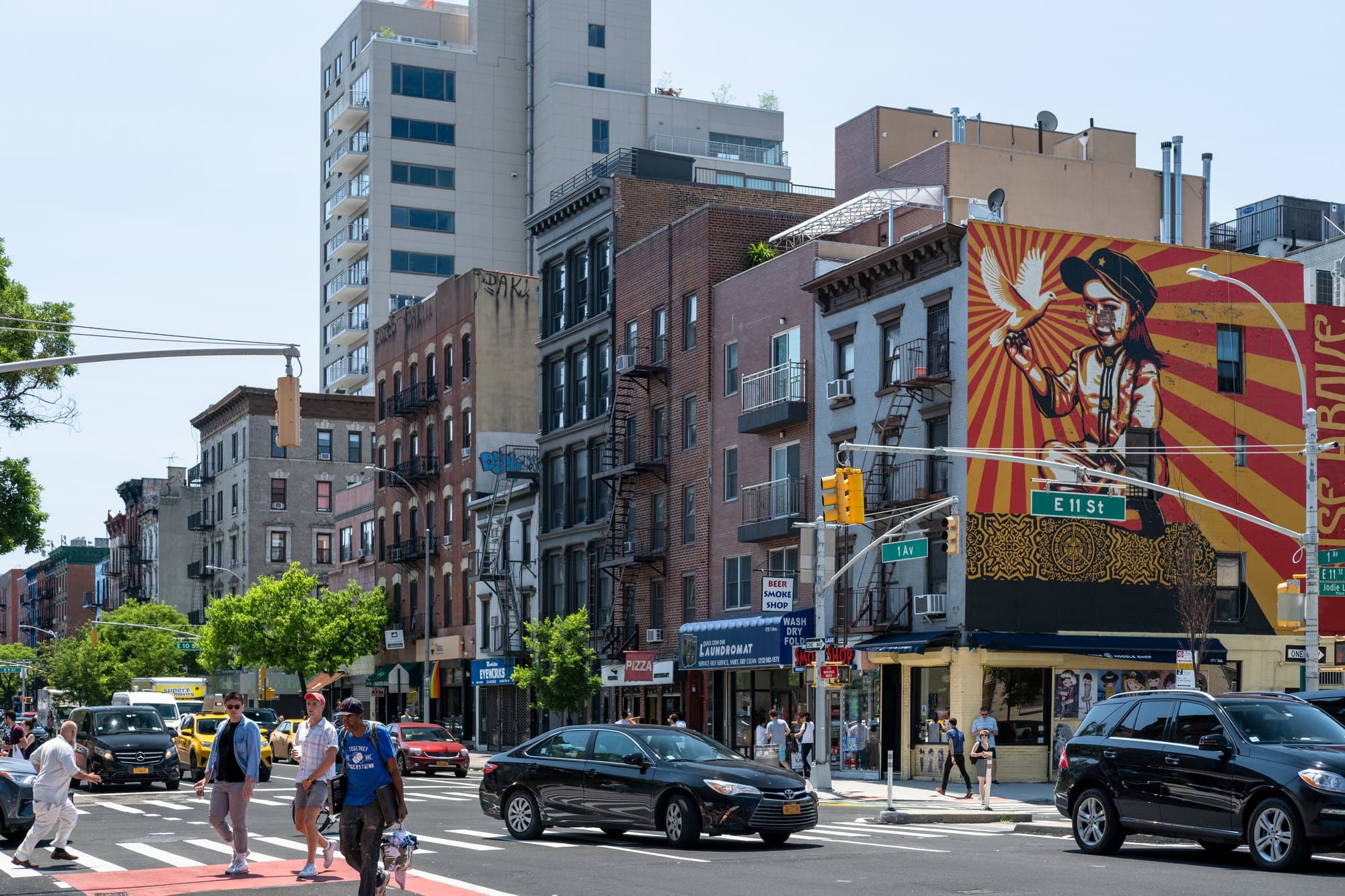
E 11th and 1st Av, East Village. I love all the colorful murals throughout the area.
It ended up being more expensive than my San Francisco place but figured it was fine as I became familiar with my new city. As I explored the city over the next few years I could see if there was anywhere else I would prefer to live without being rushed.
I'm several months into my East Village residence now and have been loving it. The East Village immediately struck me as a vibrant and fun area—if a bit loud—filled with lots of affordable restaurants, bars, shops and young folks. It reminds me of the Mission District in San Francisco.
The best surprise was that with the nearby L train station I'm closer to Williambsurg than some parts of Manhattan. I'm just one stop away from Bedford Avenue station so it's very easy to hop over for dinner and drinks in that part of Brooklyn.



Various colorful buildings in the East Village.
Moving day came in mid-March. The movers delivered my items without issue and the whole thing took less than 30 minutes as I didn't have much stuff. After several weeks I finally had all my furniture and essentials set up, as well as began acquiring some plants to add some greenery to the place.



My EV apartment after getting settled (with framed photos from my Africa trip).
Why New York?
Why it's so refreshing compared to San Francisco
While I have had five months here so far to get settled and explore, I still absolutely feel like I'm new here. The city and surrounding areas feel so limitless to me right now; I hope that feeling never fades. There's so much to explore for years to come but even after my first few months here, there have been many things that strike me as undeniably New York. These are more reasons why I treasure this place:
The ENERGY
This is by far the #1 biggest and most perceptible difference. The scale and density of New York is on another level. It's ALWAYS so lively. People are always out at all hours of the day. Things are always happening. There's always an energy to be seen and felt. Be it running out to grab lunch in the middle of the weekday or walking home well past midnight on the weekend, you're never alone.


Manhattanhenge at 42nd street. Twice a year the setting sun perfectly aligns with the New York street grid. I went to shoot it in July and it was mayhem. Thousands of people filled the streets and traffic stopped for ten minutes.
My favorite feeling is walking home from work on a Friday evening and seeing the neighborhoods really come alive: the busy sidewalks, convivial bars with breezy open windows, throngs of people crossing intersections, each weaving through others going their own way.
I could be in a busy part of San Francisco at 7pm at night and there would be a good chance that I would be the only person on the street for at least a block. That would never happen in New York. I have even walked from the West Village to the East Village after 4am—on a snowy February night no less—and still encountered many folks out and about, still enjoying their night.



Top to Bottom: Astor Place, West Village, Central Park
The people
Living in New York is not easy. It's expensive. The winters can be harsh and summers can make daily activities, like taking the subway, a thing of nightmares (smelly, sweaty, cramped). But that means one thing: people that are here must really want to be here and they work hard to live here.


Top: Central Park (near Strawberry Fields), Bottom: Welcome to Little Italy
New Yorkers strike me as ridiculously ambitious people. Always in a rush, yup. Maybe a bit curt with you as they try to get on with their day, definitely. But not lazy. They came here to accomplish something or make something. The energy and people in New York are inspiring.
I think Casey Neistat summed it up best, ironically in his vlog about moving away from New York City:
“New York City is a place where you can do anything and be anything because everyone is too damn busy to worry about what anyone else is doing. It's a place where you're all at once surrounded by thousands of people but are entirely alone, left to your devices to do whatever you set out to accomplish.
No one lives in New York City, you simply survive in this place, and that weeds out the weak. And that Social Darwinism leaves you with 8.5 million other people looking to make their mark.”
There are so many things to do
No surprise here. There's a seemingly endless variety of activities at your disposal in New York. There are so many restaurants of all types and cuisines to fit any mood or occasion. (Most important to me: there's a ton of excellent Greek restaurants! There was only one good one in San Francisco.) And they're all open late! I was hard pressed to find a casual bite to eat in my neighborhood in San Francisco open past ~8-10pm.

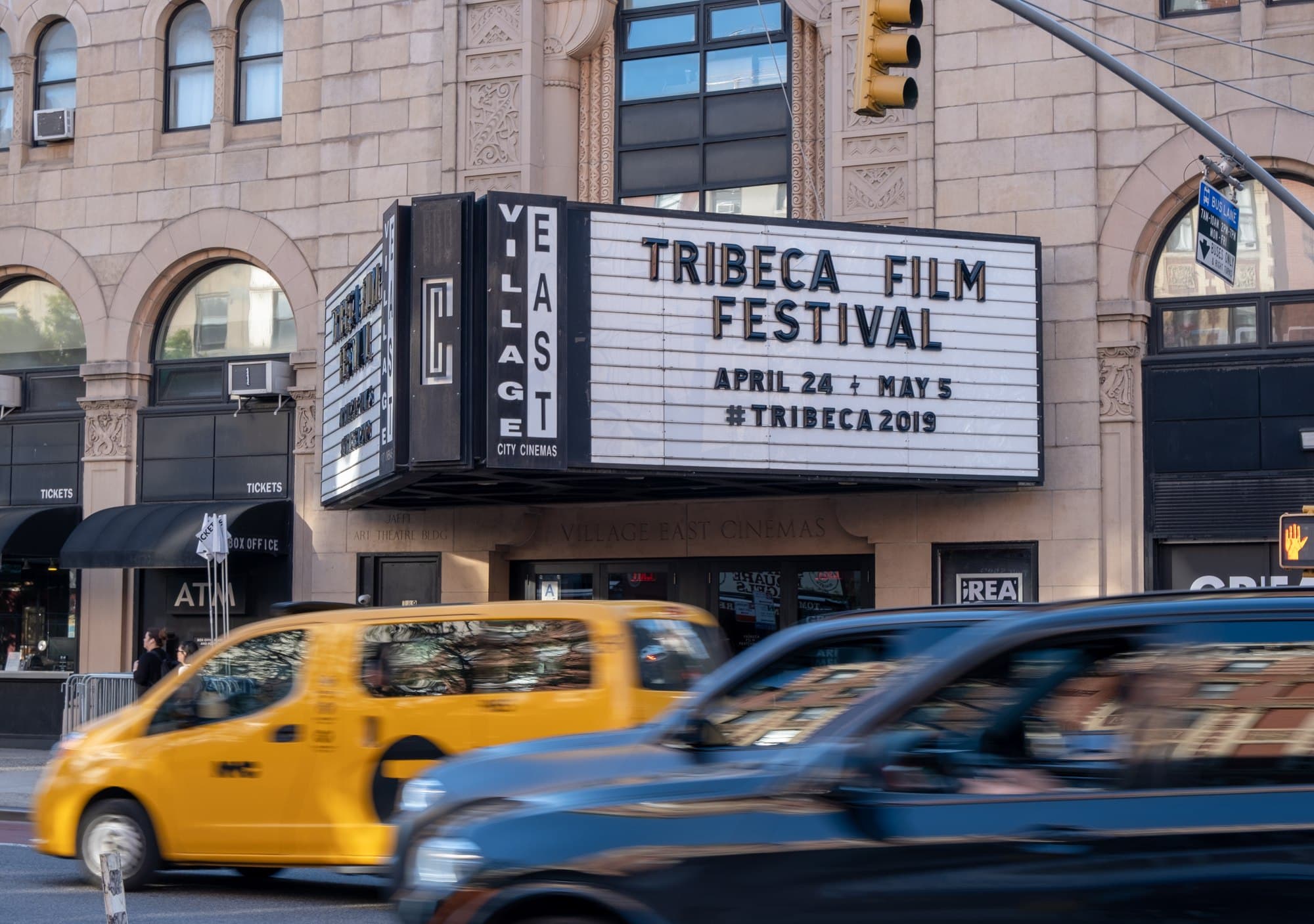
Left: The Met, Right: Tribeca Film Festival at Village East Cinema in the East Village
There's a huge range of entertainment options of course: plays, comedy clubs, Broadway shows, immersive theater, large and small music venues like Madison Square Garden, Barclays Center and the Village Vanguard. And lets not forget the myriad of museums from The Met, MoMA and the Whitney to hundreds more. You should definitely go on a fun museum tour from my friend Nick Gray's company Museum Hack.


Left: Broadway in SoHo (a shopping area), Right: Busy 42nd St (not too far from Times Square and many Broadway theaters)
Finally, I need not mention that there is and endless supply of bars, shops and parks to explore as well. Finding something to do won't be a problem; deciding what to do will.
It's a real city with real public transit
Ask any New Yorker and they'll tell you the New York subway system is broken. That it has outdated infrastructure and is in a state of crisis. Not to mention frequent delays, overcrowding and annual station floods.

W 34th St & 7th Ave, near Penn Station and Herald Square
But compared to public transit options in San Francisco, the New York City Subway is amazing! It's so easy to get around. Take a train (and maybe a transfer) and you'll probably be just a short walk from your destination. Car traffic can get so bad in New York that it really feels like people from all walks of life take the subway. You'll see everyone from local college students to affluent finance folks in suits taking the subway daily.
It's the busiest rapid transit train system in the Western Hemisphere. It runs 24/7, has a whopping 472 stations, 36 lines and is on track to phase out its aging magnetic stripe card fare system. The upcoming contactless card system, dubbed One Metro New York, will also support Apple Pay, Google Pay and Samsung Pay.
New York rewards walking
I love walking everywhere, even when there's a perfectly good subway. And especially when I find myself in an entirely new city. There's a certain indefinable quality about wandering around New York on foot that lets you really feel the city. Of course there's the people watching, where you get a minute glimpse into everyone's lives, maybe wonder what their story is, as you pass them or look at a crowd waiting for the light to change (just kidding, everyone jaywalks here).
By its nature, the metropolis provides what otherwise could be given only by traveling; namely, the strange.
—Jane Jacobs, The Death and Life of Great American Cities
Just like the people, every part of the city has its history and stories to delve into. Some are visible at a glance with plaques mounted in public places. Others aren't; they require more effort to dig into, like that little dirty patch left behind on the ceiling of Grand Central Terminal.


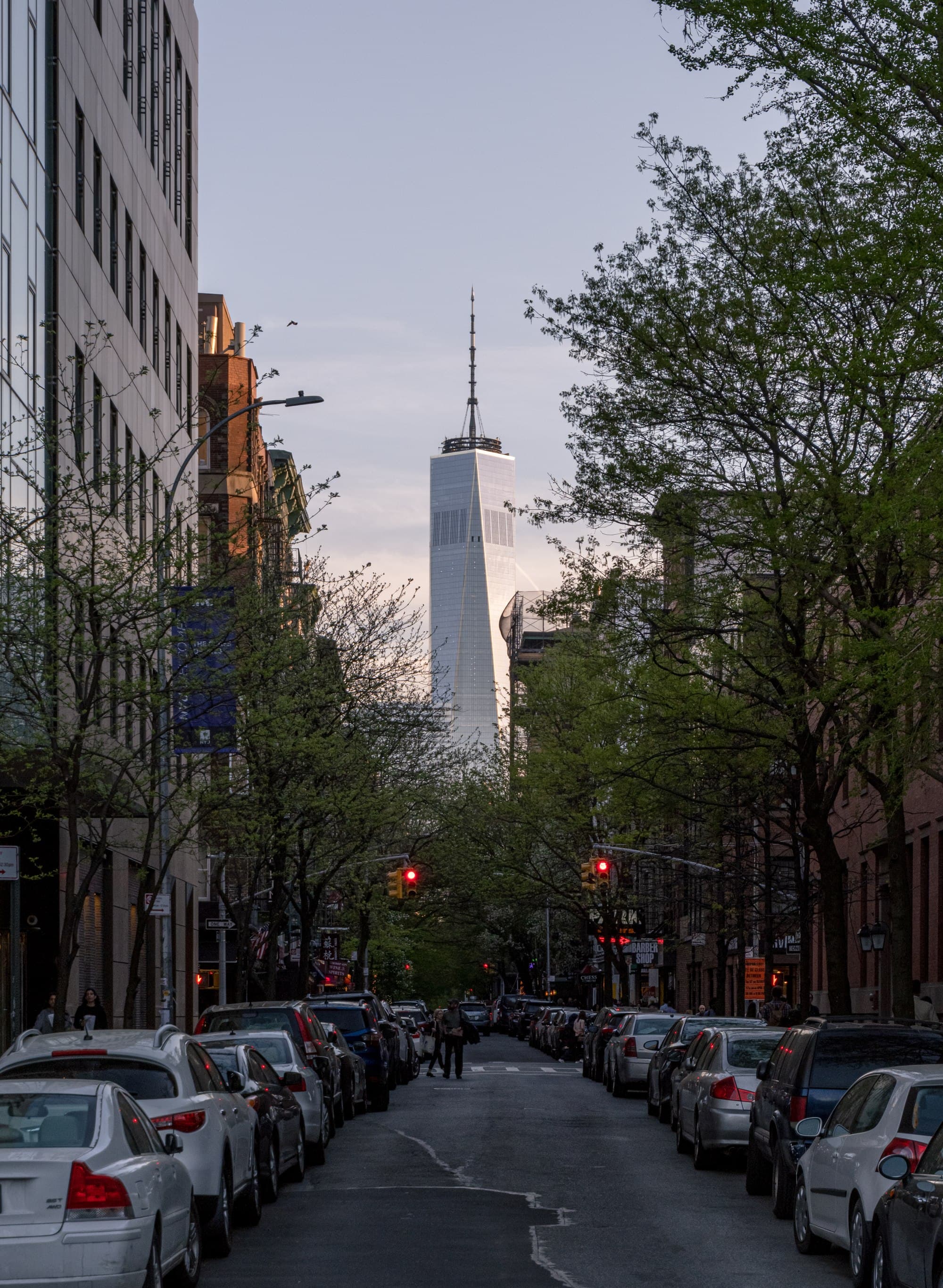

Top left: The High Line, Top right: The Vessel at Hudson Yards, Bottom left: 1 WTC seen from Washington Square Park, Bottom right: SoHo
There's the mix of architecture you'll see as you walk past old buildings—some even dating back to the late 1700s like the Morris-Jumel Mansion—and new buildings alike. There's the interesting rays of light the sun makes as it weaves through and reflects off buildings in the late afternoon.. there's the sounds of traffic, laughter, yelling, protestors and certainly horns.3
There's always something interesting to see, wonder or learn on any stroll or commute here. There was even a guy that walked every single mile of sidewalks, paths and roads of the 5 boroughs—all 8,000 miles of it—over 6 years.
Not everyone works in technology!
The San Francisco Bay Area is obviously known for being the most pivotal hub for technology companies and a leader in technology innovation. That was fascinating to be surrounded by for almost a decade, but now I've found myself yearning for more. More diversity of people, occupations and interests.
I can walk into a coffee shop in New York, stroll along a path in a park or ride the subway and not overhear startup or VC chatter. As basic as that sounds, it's refreshing. This also leads to more engaging discourse amongst old friends and new friends alike. You're far more likely to hear about or meet people working in the arts, fashion, finance, real estate and media.
The parks are something else entirely
San Francisco has some beautiful parks; there's no doubt about that. But there's something about San Francisco culture that makes parks feel like a place you must plan to visit, like on a weekend with great weather, snacks, beverages and blanket in hand.
Parks in New York are not just outdoor spaces nestled throughout the concrete jungle. They feel like a place where life happens. Regular, daily unplanned life.
Relaxing for a few minutes on the way back from work or while waiting to meet with a friend or new date. For strolling through in between errands or meetings. For watching performers or grabbing groceries or a snack at one of many local farmer's markets. Or just wandering around to explore. And I'm not just talking about Central Park. Dozens of small parks throughout the city act as these thriving community hubs.
Parks here feel like part of city life and you don't need to bring anything with you to enjoy it. Of course, nothing is stopping you from setting up a picnic on a sunny Sunday in Central Park too. There are more than 1,700 parks across the 5 boroughs and Central Park is only the fifth largest.


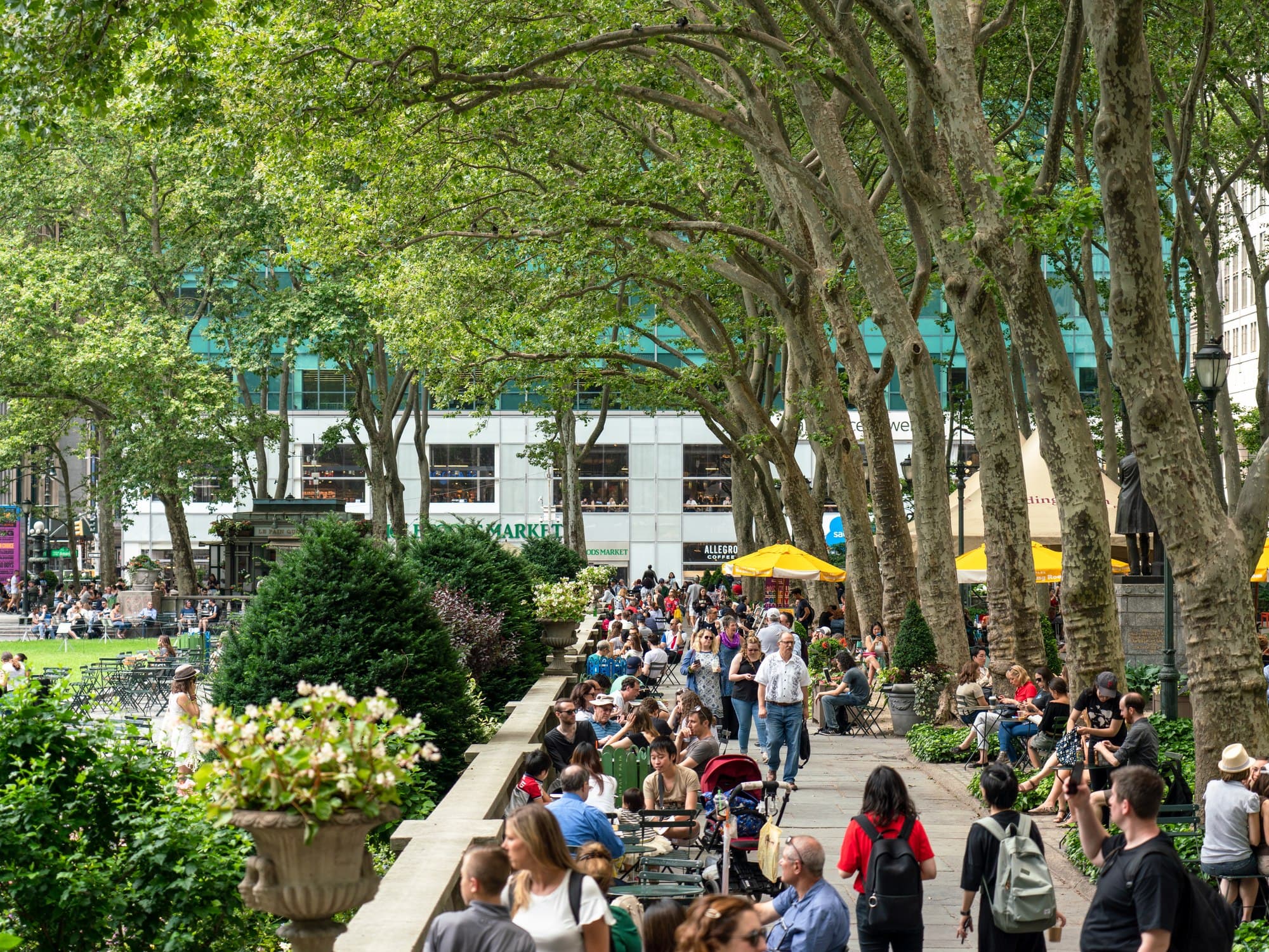


Top to bottom: BryantPark, Central Park, Bryant Park and Washington Square Park
Basically, it feels like a real city.
This is definitely sample bias from my own personal experience here but it seems like people here make more of an effort to meet up. Be it drinks or a bite one weekday after work or weekend activities. Maybe it's due to people having smaller apartments and wanting to escape them more often? Or maybe it's because your friends might live all over the city, leading to a stronger culture of going out instead of meeting at someone's apartment (which is likely to be tiny and not convenient for everyone to get to).
It also felt refreshingly easier and more approachable to date in New York. I ended up meeting my girlfriend here shortly after moving. But then again, I have friends here going out on several first dates a week trying to meet a partner.
What about winter?
Yes, New York has seasons.
I've never experienced a real winter. As someone who grew up in Texas, then moved to Atlanta and then San Francisco, I've never had to deal with real winters before. Sure, I've visited places that were cold. But I have never dealt with winter as a regular part of my life.
I had a tiny reservation about dealing with New York winters, but after experiencing it... it really wasn't as bad as I had expected. While I only got a glimpse of a full winter season as I moved in mid-February, I definitely saw numerous snow days and had my share of 30 minute walks to work in 17 degree weather. Followed by some less-than-fun dirty, slushy snow days.
January is the coldest month with lows and highs averaging between 23-36°F. While there are usually about 75 days per year in New York City where the temperatures remain below 32°F, that is balanced out with 200 days per year where temperatures exceed 60°F.

Washington Square Park, Tompkins Square Park, 5th Av
On one hand those numbers don't seem that cold, especially compared to winters in the Upper Midwest where snow piles grow several feet high and the temperatures regularly dips below zero. On the other hand, in the Midwest you're probably driving in a heated car to get around.
In New York you're gonna be outside braving it and walking most of the time, even if that only means walking to or from the subway. But once you get to where you're going, everything is heated and all restaurants install outdoor vestibules to prevent the cold from entering.
Loving this weather. My first NY snow ❄️😍🥰 pic.twitter.com/1pShZKT8Mz
— Paul Stamatiou 📷 (@Stammy) February 20, 2019
The weather quickly goes from fun and novel to just something you have to deal with. There are occasional options for escaping the freezing cold on the street, be it by walking into a warm and cozy coffee shop or a bar with a fireplace, but you just need to invest in a very high-quality down jacket. Ideally a waterproof one. It will make all the difference. I got a thick waterproof down jacket years back that has served me well. Paired with with various layers I was fine with temperatures reaching the teens.
There is, however, a flip side to this. New York has distinct seasons. That's something that can't be said about San Francisco. Spring begins to usher folks to Washington Square Park to enjoy the loosening grip of winter while enjoying the lovely cherry blossoms.


Left: Street near Washington Square Park, Right: Greek restaurant on the Lower East Side
Then there are warm summers (not too hot—only about 12 days a year of 90+°F temps) with welcomed occasional thunderstorms, though they can make it awfully humid at times. September ushers in some ideal, slightly cooler weather for fall that everyone I've talked to has said is their favorite time in New York.
It sounds very basic but I'm excited about having seasons again. Being able to wear shorts regularly, and not have to carry a light jacket around everywhere, is not something I have been able to do in San Francisco.
What about the tech scene?
Tech doesn't rule everything here.
As I mentioned earlier, New York livelihoods are remarkably diverse, especially compared to San Francisco. I would guess that people here are more likely to work in the arts, fashion, finance, real estate and media than tech.
It's definitely too early in my time in New York to have a real sense of the tech community here and how it compares to the San Francisco Bay Area. However, I do feel like moving here was a small step backwards in my career and that the best tech industry jobs and opportunities for me will always be in the Bay Area... or at least that's how I felt leading up to my move to New York the last two years.

Houston Street, Lower East Side
Sure, many of the tech giants and their ilk have satellite offices in New York: Google, Twitter, Square, Amazon (though the HQ2 plans didn't pan out), Facebook, Instagram, Spotify, Stripe, Uber and Lyft. And there's countless startups based here as well, particularly finance-related ones.
However, even with those larger companies it seems like only a few teams work out of their New York offices, and likely not the flagship teams you may find most interesting. I've had friends at such companies that had to relocate to the Bay Area to move to a better product team. And then there's companies like Apple that don't seem to have any consumer product, engineering or design footprint here (maybe that's changing?) and don't seem to support any remote workers.

Astor Place, near Instagram NYC
So then what does New York have going for itself in this realm? I really like the way Foursquare cofounder Dennis Crowley described it. He said New York tech is great due to the intersection of art, tech, cities and culture. Dennis goes on to say this in a Washington Post article:
“What really makes New York stand apart is that tech is the sixth or seventh most important thing in New York — behind music and publishing and fashion and finance. You can do great things in tech, and still no one will know you at the cocktail party. And that is the beauty of it — that is the antithesis of Silicon Valley.”
There's no lack of activity with heaps of tech-related events happening all the time, as well as more than enough workspaces (in addition to tons of great coffee shops) from Betaworks Studios to Spacious, WeWork, The Farm, Galvanize and Neuehouse.
I would also like to hope that over the next 5 years, companies will become more open to accepting and supporting distributed offices (and housing prominent product teams there) and fully-remote employees. Remote and distributed work are such buzzwords right now that I can't be sure if actual progress is being made with companies embracing this dramatic shift.
For now, it's clear progress is being made in New York and it's definitely not bad place to build a career in tech. These were all headlines within the last year:
- Who Needs Amazon HQ2? Not New York Real Estate’s Tech Boom (WSJ)
- It Started With a Jolt: How New York Became a Tech Town (NYTimes)
- What makes New York attractive to the tech industry (Washington Post)
- Why New York City's Tech Scene Is Heating Up (Inc)
First impressions
What stuck out compared to San Francisco
-
There are sooo many food options! I still can't get over it. In particular, there are gobs of options in the fast casual realm catering to the busy New Yorker. Small corner grocers like Westside Market have huge aisles of prepared food and quick on-the-go items. It's also easy to find cheap, good meals.
If you can't be bothered to leave your apartment, there's no lack of restaurants that deliver (and delivery apps) to help you out. Delivery seems much, much quicker and common here compared to San Francisco where it would take 90 minutes and $30 to get a burrito delivered.
However, the biggest surprise for me has been the corner bodegas—they may not look like much but most of them have an impressive deli and can make some amazing and cheap sandwiches. Sunny & Annie's is my local favorite sandwich spot.
This does not need mentioning, but pizza and bagels are a big deal here as well. There's no better way to start a Saturday morning than with a bagel and coffee from Black Seed or Tompkins Square Bagels. As for pizza, well it's everywhere from surprisingly good 99 cent slices at 2 Bros Pizza to a slice at Joe's on Carmine to a wood-fired masterpiece from Roberta's in Brooklyn.4
-
Grocery stores are ridiculously busy. Which brings me to this point: supermarkets like Trader Joe's and Whole Foods have some crazy lines. Friends here joke that the lines are so long they would shop while in line as the lines snaked through every aisle.. sure, they were exaggerating a bit, but not that much. It gets very busy.
I've started relying more on local bodegas and markets for essentials. At times I'll use FoodKick/FreshDirect and Amazon Pantry for the larger items. There's no getting around it; getting groceries in Manhattan is a pain. You're usually only getting a few things at a time so you don't have to walk blocks home with too much heavy stuff or have to grab a taxi home.
-
Murals, murals everywhere. Sure, every city has its fair share of graffiti, but in addition to that New York has some stunning murals and street art. Not only on blank city walls, but on entire apartment building façades.


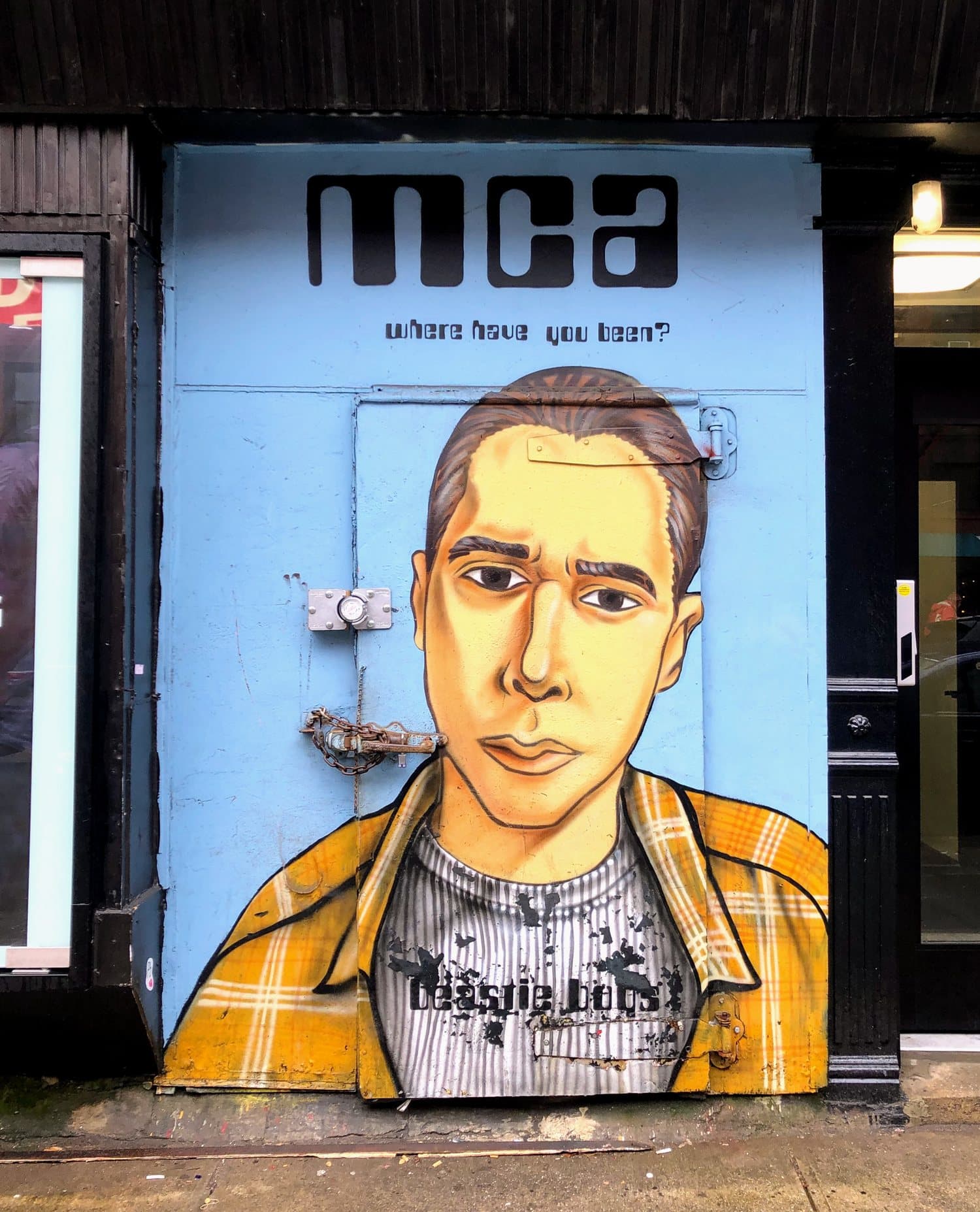


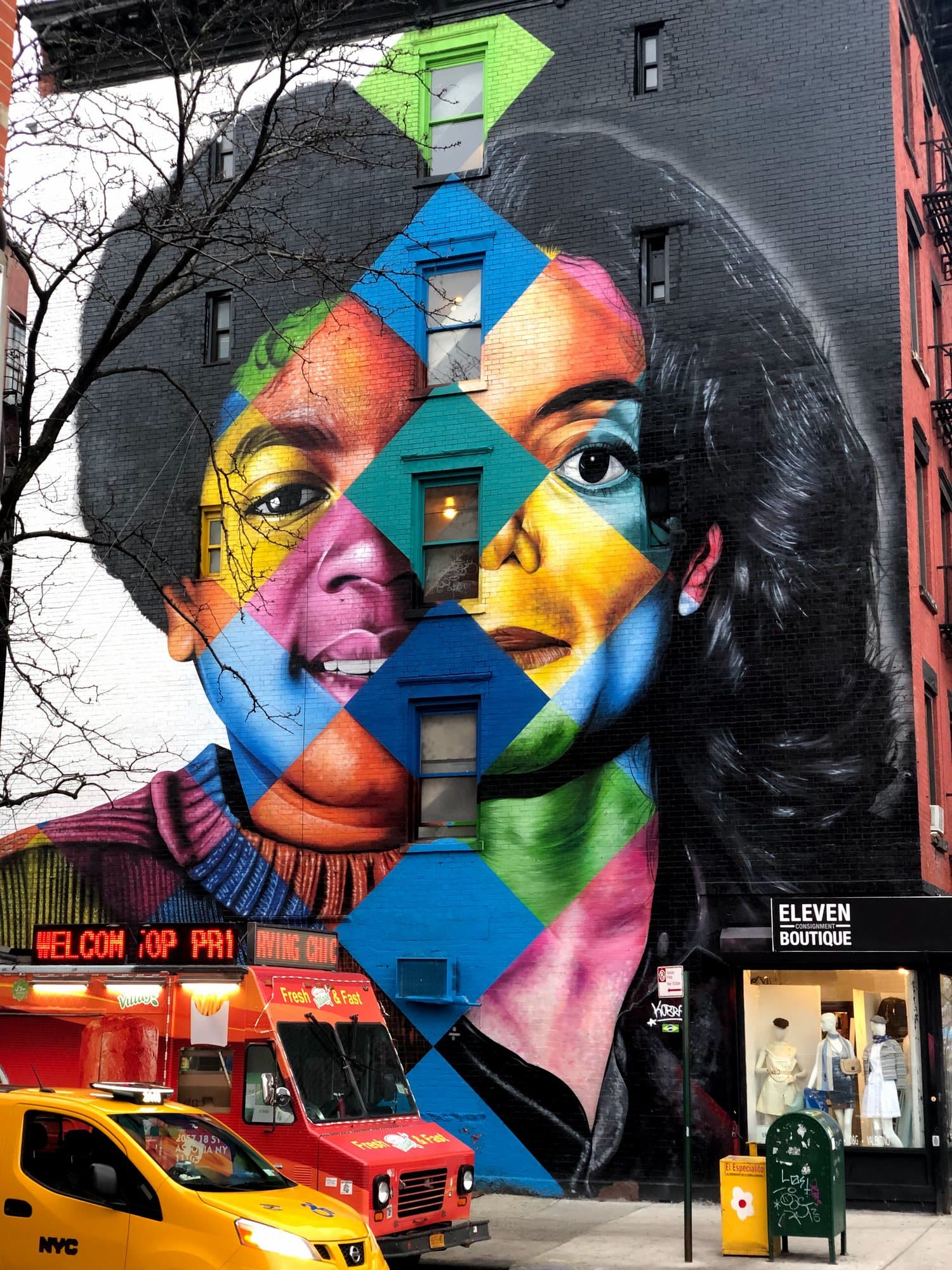

-
When it rains, it RAINS. We're talking big rain drops too. It can go from absolutely no precipitation at all to an all out downpour in a minute. Barely enough time to find cover. The Dark Sky app has been super handy. It sends ridiculously accurate push notifications when it's about to rain in your area. Compared to San Francisco's persistent drizzle and fog, you definitely need a good umbrella for the unpredictable NY rain. I like Blunt brand umbrellas, but see a ton of folks on the subway with reverse/inverted umbrellas.
-
It's acceptable to be more upfront. You've no doubt heard it said that New Yorkers are rude. After several months here, I can understand where that perception comes from.. but it's really just that people are busy and prefer efficiency. And they may be a bit more curt with you.. they just want to get to the point and move on. If you can't decide what slice of pizza you want and you're holding up the line or can't find your MetroCard and are blocking a turnstile... you're gonna get yelled at.
It may come off as lacking basic manners but it's more so that folks are always in a rush. If you stop someone and ask for directions though, people are more than helpful.
I feel like it is also the norm here—expected even—to be pushy or vocal when asking for things you need. I was immediately told by close friends here that I was too nice and needed to hold my ground more when it came to everyday things. For example, I had some issues with my apartment before I moved in. Polite reminder emails didn't really get me anywhere. I had to go out of my comfort zone with several very strongly-worded messages and calls to get my issues resolved in my favor.
-
The city never sleeps. Everything is open later and happens later in New York. This is a big change compared to getting dinner in San Francisco at 7pm. It seems totally normally to get dinner at 9pm in New York. Bars are also open until 4am, which is insane compared to 2am in San Francisco.
The other thing that was new to me is that some restaurants that will offer you a table only if you say you can finish dinner in an hour or so as they have a table coming right after you.
-
People dress well here. Coming from San Francisco, it's very easy to feel underdressed here. Something I expected given New York's dominance in the fashion world but I definitely feel the need to update my wardrobe.
-
New Yorkers walk fast. Everyone seems like they're in a rush. I already walk fast so that wasn't anything to get used to, but it makes it all the more obvious who's a local and who's just visiting. If you're in a busy part of town you really have to get good at weaving through large crowds when crossing big intersections. Also, learn to jaywalk safely and effectively. No New Yorker waits for the crosswalk light to cross.
-
Trash bags line the streets. New York doesn't have any alleys between buildings for dumpsters and trash pickup so it goes right on the sidewalk. Oh and you'll often see rats digging around in the trash late at night so don't walk too close to them when coming home from a night out.
-
Yellow taxis are so easy to hail. I have significantly reduced my usage of ride-sharing apps like Lyft and Uber in New York. They're just less convenient. I could wait 6 minutes for an Uber or Lyft to come to me, or I could walk to the corner and hop in a taxi in 1-2 minutes. As for the convenience of paying, they all accept Apple Pay and a pairing app called Curb that is very handy.

The Oculus near the World Trade Center
-
New Yorkers stand "on line" not "in line". One weird New York-ism I've picked up on. Folks say that they are standing on the line, not in the line. Weird.
-
It's not cheap. I expected things like rent and transportation to be pricey, but it goes for just about everything in New York. It's very easy to spend a lot of money here going out often and trying new things. I definitely had some sticker shock my first few months here when checking how much I had spent.
As such, I feel fortunate to be here now than if I had come here a decade ago when I was broke. New York is much more fun if you can afford living here with room to go out and explore what it has to offer. Especially when friends tend to want to meet up at a bar or restaurant instead of at someone's small apartment.
Getting familiar with the subway
It wasn't too much work to get used to the subway, but here were some of the first things I had to learn.


59th St Columbus Circle station
-
Subways in Manhattan mostly run North/South. It will be harder for you to go East/West, with a few exceptions like the L train that goes to Brooklyn (but it's also under intermittent construction) and a few lines that turn a bit near downtown.
-
Go by the letter or number of the line, not the color. Don't start asking folks how to find the gray line. What the colors do though is help you identify that certain lines of the same color run along the same track for at least part of the way. For example, the A C E lines run together from 42nd St all the way to Canal St before the begin splitting off into their own directions.
-
It costs $2.75 per ride, and this includes transfers, which you'll definitely be doing regularly to get across town. If you ride the subway more than 46 times a month, the monthly unlimited ride MetroCard would be worth it (it's $127 at time of this writing). Subway cards are thin magnetic swipe cards, but a fancier contactless system that supports Apple Pay, Google Pay and Samsung pay is slowly being rolled out. It's currently functional at certain stations but I haven't had the chance to try it yet.
-
Which side do you get on? This mixed me up for a while. Larger subway stations let you enter from any entrance and then find the direction for the line you want once inside. Unfortunately, you can't cross over to the other side of the track at smaller stations, so you have to be sure to enter the correct street entrance and pay attention to the signs for going uptown or downtown.
Sometimes figuring out the direction of a line gets tricky in larger stations and you have to resort to looking up the end of the line to see which way it's going. Canarsie on the L? That's going to Brooklyn and so on. This got tricky for me when I was in DUMBO in Brooklyn and wanted to get back to Manhattan with the F line. There were two directions: to Jamaica/179th St and to Euclid Ave. Neither ended in Manhattan so I had to check where the line went with an MTA map before realizing it went from DUMBO through Manhattan and then to Queens.
-
White dots mean express stops. When looking at the subway map, you'll see stations with either black dots or white dots. Black dots are local stations that only local trains stop at, while white dots signify express stations that only express trains visit.
Related: if you see a train that has the line letter or number in a diamond shape instead of a circle, it's an express (but a train letter or number being in a circle does not mean it's not express, or so it seems...). When in doubt check the subway map, a routing app, look out for signs that mention if trains change depending on the time or ask someone.
-
Don't wear your backpack when it's busy. It's a common courtesy to hand hold your bag on packed trains to be more space efficient. The same goes with not taking up more than one seat if you sit down or being too close and hogging the handrails.
-
Avoid empty train cars. It's empty for a reason. It's either smelly, has no A/C, there's a rat in it or some unspeakable thing has occurred on it.
-
The Transit app is very handy. Tons of apps can help you navigate the city, including Google Maps, but I've been drawn to this one. But nothing replaces a general understanding of the lines, so keep this MTA subway map bookmarked or get an app that has it.
I ❤️ NY
I'm very content with my move from San Francisco to New York. I was in a rut in San Francisco and now in New York I feel happier, invigorated and inspired.
You might be thinking that my post is maybe overly positive on New York City compared to San Francisco. I'll be the first to admit that I'm still in my honeymoon phase of New York where I think everything is great and see it all through rose-colored glasses. Yes, maybe I'm glossing over parts of what makes New York city living so hard: it's very expensive, doing something simple like getting groceries is a massive pain in the butt here, it's always busy and you're gonna be living in a smaller place.
real talk: I'm so much happier in New York. Had no idea how depressed I was in SF. Kept delaying the move for silly reasons (had a condo, thought it would be a hassle to rent it out.. took 3 days). Crazy how much your life can change with one decision 🥰
— Paul Stamatiou 📷 (@Stammy) March 11, 2019
There's also so much to do here that fear of missing out can and will set in quickly. Sometimes you have to ignore it and just stay in several weekends and write an 11,000 word blog post about how much you love New York.😂
But damn, I really don't think my opinion of New York will change much if you were to ask me a year or ten years from now.
It was surprisingly easy to move to New York once I decided that I wanted to be here. I only regret not moving sooner. The move was definitely tedious with a lot of things to research and coordinate, but it wasn't hard. My only advice is to get as much space as you can afford. It's a busy and chaotic city and having your own space to escape it all—or be trapped by it in the winter—is necessary.
Will I miss San Francisco? Sure I will. Any place you've spent a significant portion of your life will not be easily forgotten. I think the one part of San Francisco I will miss the most is being able to see nature so easily; a pristine horizon dotted with mountains and trees in the distance, easily spotted from many parts of the city. By comparison, just about everywhere you walk in Manhattan you will only see tall buildings surrounding you as far as you can see.
It was also very easy to wander outside of San Francisco with numerous options from Monterey to Tahoe to Napa Valley. However, there's also a ton of places near New York that I'm excited to visit: Beacon (to see Dia:Beacon museum), Orange County (to visit Storm King Art Center), the Catskills, the Hamptons.
One thing that's new to me is how easy it is to take the long distance trains as well. I've taken Amtrak several times to visit family in Washington, D.C. but it also goes to Boston, Philadelphia and more.
Was it just the change of scenery that did it? Some folks have asked if it was just a change of scenery that I longed for, and that a variety of cities might have checked the box. That may quite possibly be the case but I don't know anywhere else where I would feel so invigorated by the pure energy and density of the city mixed with the ambition of everyone there.
I go to Paris, I go to London, I go to Rome, and I always say, “There’s no place like New York. It’s the most exciting city in the world now. That’s the way it is. That’s it.
—Robert De Niro
More photos
I couldn't figure out where to put these
All photographs in this article shot myself with my Sony A7R III or my Fuji X-T30.


The Oculus

Astor Place


Left: Liberty Island, Right: Hudson Yards





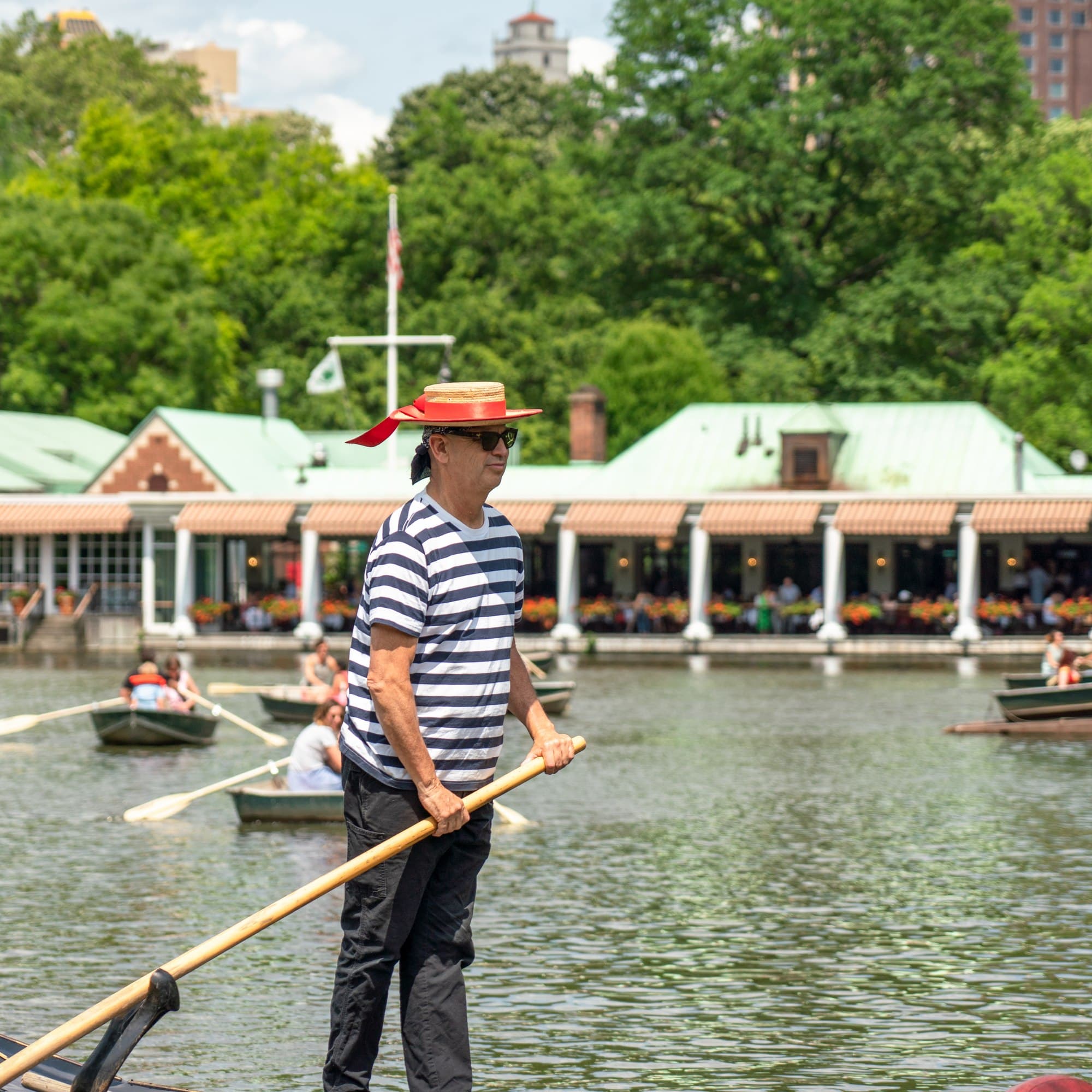
Central Park

Battery Park
1 There were two kinds: valued inventory and lump sum. The former required an itemized list of everything. Unfortunately, by this point I had packed everything and didn't have that list. I went with the lump sum option that only needed a list of items over $1,000. I also purchased a "mechanical and electrical" package to protect against non-functioning items that do not have visible physical damage. Unfortunately, I had to remove this option as I was told it did not apply to items I could not easily test for the movers before and after (like my expensive computer video card and a bunch of camera lenses).
2 I had 11 different roommates over 11 years if you include college. In San Francisco I lived in the Mission, SoMa, Alamo Square and Nob Hill.
3 The Colossus of New York by Colson Whitehead is a quick read on such observations throughout the city.
4 Moving to New York from San Francisco does mean trading a great burrito for great pizza and bagels. And, well, California leads in terms of high-quality produce and culinary experimentation.